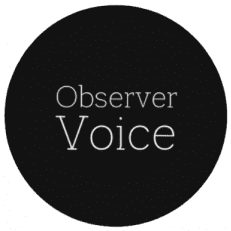Health Insurance Waiting Periods: Key Insights for New Policyholders

Buying health insurance is a smart decision, but did you know you might not be able to use all its benefits immediately?
That’s because of something called a waiting period in health insurance. This is the time you need to wait before you can claim certain treatments or benefits. In this guide, we’ll break down the different types of waiting periods, why they exist, and how you can manage them effectively.
What is a Health Insurance Waiting Period?
A waiting period in health insurance is the period you must wait before certain benefits become active. During this time, you cannot claim specific medical expenses covered under your policy.
For example, maternity cover often comes with a waiting period of 2-4 years, meaning you need to hold the policy for that duration before claiming maternity-related expenses. The duration of the waiting period depends on the specific policy and insurer.
5 Types of Waiting Periods in Health Insurance
Every health insurance policy includes different types of waiting periods. Let’s explore them in detail.
1. Initial Waiting Period (General Waiting Period)
- This applies to all new health insurance policies.
- The standard industry waiting period is 30 days from the policy’s start date.
- It does not apply to accidental hospitalisation, which is covered immediately.
2. Pre-existing Disease (PED) Waiting Period
- Covers medical conditions diagnosed up to 48 months before policy purchase (as per IRDAI).
- Common pre-existing conditions include diabetes, hypertension, and thyroid disorders.
- The waiting period varies from 1 to 4 years, depending on the insurer and plan.
3. Specific Illness/Procedure Waiting Period
- Certain diseases and surgeries have separate waiting periods, typically 1 to 2 years.
Below is a table showing common conditions and their expected waiting periods:
| Category | Examples |
| Musculoskeletal Disorders | Arthritis, Osteoporosis, Spondylitis |
| Gastrointestinal Disorders | Pancreatitis, Gallstones, Ulcers |
| Ocular Disorders | Cataracts, Glaucoma |
| Urological Disorders | Prostate issues, Hydrocele, Varicocele |
| Gynaecological Disorders | Endometriosis, Fibroids, Ovarian Cysts |
| Ear, Nose & Throat Disorders | Sinusitis, Tonsillitis, Deviated Nasal Septum |
| Hernias | All types of hernias |
| Psychiatric Disorders | Schizophrenia, Mood Disorders |
| Neurodegenerative Disorders | Alzheimer’s, Parkinson’s Disease |
4. Maternity and Newborn Cover Waiting Period
- If you’re planning a family, consider maternity waiting periods, which range from 1 to 4 years.
- Most insurers require at least 2 years of continuous coverage before you can claim maternity expenses.
- The maternity cover usually includes delivery expenses, newborn care, and vaccinations for the first 90 days.
5. Critical Illness Waiting Period
- Critical illness coverage comes with a waiting period of 30 to 90 days from the start of the policy.
- Common illnesses covered under this waiting period include cancer, stroke, kidney failure, and heart attacks.
How to Reduce or Avoid Long Waiting Periods?
You don’t always have to wait years to access your health insurance benefits. Here are some ways to reduce waiting periods:
1. Choose a Policy with a Shorter Waiting Period
Some insurers offer plans with reduced waiting periods for pre-existing conditions.
2. Opt for a Waiting Period Waiver Add-on
Some policies allow you to pay extra to reduce or eliminate waiting periods.
3. Buy Health Insurance Early
Purchasing health insurance when you’re young and healthy means you’ll complete the waiting period before needing treatment.
4. Port your Health Insurance
If you switch insurers but continue coverage, your previous waiting periods may be carried forward.
How Does Waiting Period Affect Health Insurance Claim Settlement?
Understanding the waiting period in health insurance is crucial for claim approval. Here’s how it works:
- Claims made within the waiting period: If you seek treatment for a condition during the waiting period, your claim will not be approved.
- Claims made after the waiting period ends: Once you complete the waiting period, you can claim hospitalisation, treatments, and surgeries as per your policy.
Example
Kiran buys a health insurance policy on January 1st. She policy has a 30-day initial waiting period and a 2-year pre-existing disease waiting period for diabetes.
- On January 15th, she develops a fever. Since the illness falls within the initial waiting period, his claim is denied.
- On February 2nd, the initial waiting period ends. Now, she can claim for new illnesses.
- If Kiran needs diabetes-related treatment before January 1st, two years later, she must pay out of pocket. After this period, his policy will cover diabetes treatment.
Waiting periods are a key part of health insurance policies. While they may seem restrictive, they protect insurers and ensure fair premium pricing. By choosing a policy wisely, buying early, and understanding add-ons, you can manage waiting periods effectively. Before purchasing, always check the waiting period terms to ensure the policy meets your healthcare needs.
Observer Voice is the one stop site for National, International news, Sports, Editor’s Choice, Art/culture contents, Quotes and much more. We also cover historical contents. Historical contents includes World History, Indian History, and what happened today. The website also covers Entertainment across the India and World.

